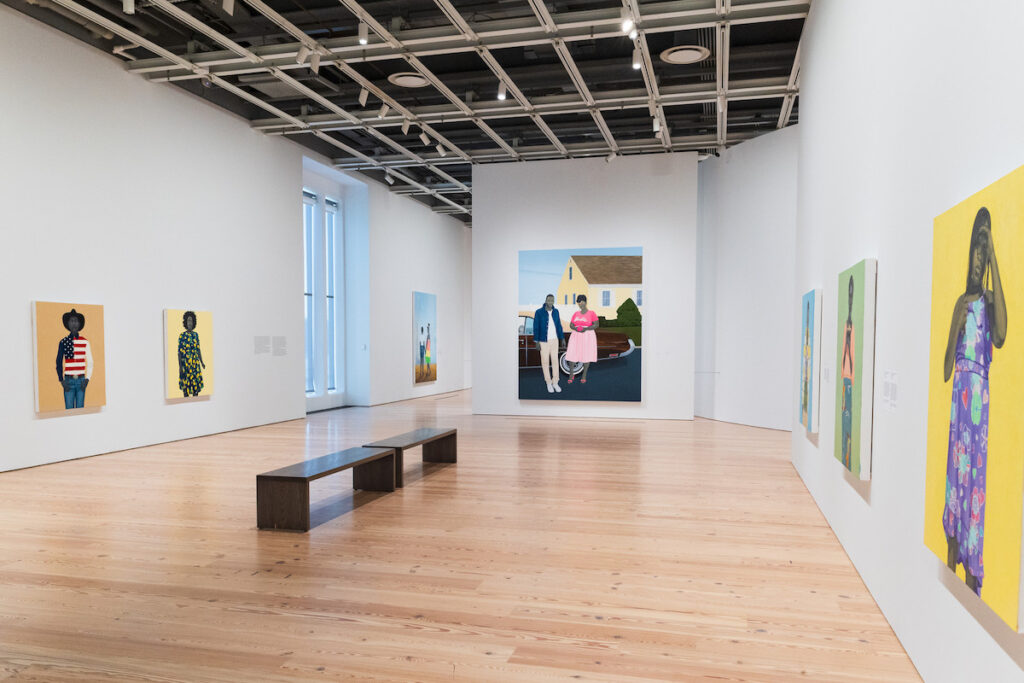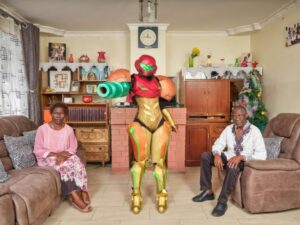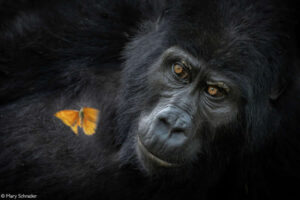One Gallery Represents Four Artists with New York Museum Surveys This Season. That’s a Problem.

Museums may tout themselves as being separate from the market, but the reality is more complicated. As others have observed, in today’s art world, sales lead to fame, fame leads to retrospectives, and retrospectives lead to more sales. There often aren’t price tags attached to what’s held within museum walls, but institutional offerings can be capitalized all the same.
You don’t need to be an expert to notice the trend. But even for those well aware of it, it is notable that, this spring in New York, all the survey exhibitions at high-profile Manhattan museums are from artists represented by a single gallery.
Jack Whitten, Amy Sherald, and Rashid Johnson—the subject of shows currently at the Museum of Modern Art, the Whitney Museum, and the Guggenheim Museum, respectively—are all on the roster of Hauser & Wirth, one of the world’s biggest galleries. So is Lorna Simpson, who will soon have a show at the Metropolitan Museum of Art. This past weekend, in the New York Times, Zachary Small and Julia Halperin reported that some had already termed this season in New York “Hauser spring.” In this climate, one need not strain the imagination to conjure a Zwirner fall or a Gagosian winter.
The Hauser & Wirth artists being given New York shows this season merit the exhibitions they’ve received. As I wrote in March, Whitten’s retrospective is the best MoMA show I’ve seen in quite some time. Sherald, who famously painted Michelle Obama, is deservedly known widely as an imaginative portraitist, and Johnson was due for a retrospective that can expand our understanding of his oeuvre, which is often discussed only in terms of his “Anxious Men” paintings. Simpson is almost always talked about as a photographer; she’s worthy of a show like the one opening in May at the Met, which is sure to prove that she’s quite a good painter, too.
The problem, then, is not that these artists are middling talents whose recognition has been buoyed by the market alone—quite the opposite. The issue, instead, is that a single gallery’s program now gives the appearance of having birthed an entire slate of museum exhibitions.

Allow me to set aside the increasingly fuzzy division between galleries and museums, for as recent articles in Artnet News and the New York Times have already noted, galleries commonly fund institutional shows, and have been doing so for some time, whether the public realizes this or not. We can’t know, and probably never will learn, how much money Hauser & Wirth injected into all three of these four shows. (The exception is MoMA’s Whitten show, which received no Hauser & Wirth funding, according to the Times report. Hauser & Wirth is listed as having provided “support” to the Sherald and Simpson shows, and the gallery is thanked alongside Johnson’s other representatives on the webpage for his Guggenheim retrospective.)
What we can know for sure, though, is that Hauser & Wirth is a well-oiled, well-capitalized, sprawling operation, with 17 galleries worldwide and more than 100 artists and estates in its stable. To join its roster is to effectively make it into the big leagues. Clearly, curators are paying attention to the gallery’s artists, but that’s not exactly surprising—the rest of us are, too. But might museums be paying too much attention to Hauser & Wirth’s roster?
You don’t necessarily have to be represented by Hauser & Wirth to get a New York museum retrospective, but you may need to show with one of its competitors. For proof, look at MoMA’s programming—specifically what’s shown on its coveted sixth floor. David Zwirner shows Wolfgang Tillmans, who got a MoMA retrospective in 2022. Ed Ruscha, who followed in 2023, is represented by Gagosian, and Joan Jonas, who took over the galleries last spring, is shown by Gladstone Gallery.
There are exceptions, of course. Thomas Schütte, the Golden Lion–winning sculptor whose MoMA retrospective opened in the fall of last year, isn’t represented by a mega-gallery. (In New York, he shows with Peter Freeman, Inc.; in Europe, with Frith Street Gallery, Konrad Fischer Galerie, carlier | gebauer, and others.) But he did end up doing a show with Gagosian not long after the MoMA exhibition closed.
This situation isn’t exactly new. It’s not so different from the one in 2015, the year that the Art Newspaper reported that Gagosian, Pace, Marian Goodman, David Zwirner, and Hauser & Wirth represented the artists behind nearly one third of all museum shows in the US. Julia Halperin, who wrote that report, noted that galleries can help provide museums with useful funding for printing catalogs, licensing images, and financing receptions. But she also expressed alarm about the findings of her survey, which she said raised “questions about the growing influence of a small number of galleries in a rapidly consolidating art market.” Those same questions could be asked now.
A jaded reader might pose a counter-question: So what? It’s hardly a revelation that the market frequently dictates what art gets seen and talked about. This is old news to just about anyone paying even an ounce of attention.

But the stakes are high for museums right now. The public and the art world are demanding change when it comes to what kind of art gets shown, with a greater emphasis on artists of color, queer artists, and women artists. The current spate of New York shows fulfills those demands, but these shows suggest that the only artists eligible for such an honor are those who attain representation with blue-chip dealers—or, to put it another way, those who make adequate amounts of salable product. With museums affirming the tastes of blue-chip dealers, we may indeed find ourselves at the apex of a mega-gallery monoculture. That monoculture is not limited to one style: these mega-galleries represent abstract painters and figurative painters, sculptors and photographers, video artists and digital artists. The point is that a small set of dealers gives the appearance of determining which artists’ work we get to see in depth.
This condition appears to be unique largely to the US, and specifically to New York, because if you look abroad, there’s an entirely different museum landscape. Take the case of Emily Karaka, a Māori painter who got her first retrospective last year at the Sharjah Art Foundation. Or take the case of Leigh Bowery, the late artist who is currently the subject of a monumentally scaled and widely praised retrospective at Tate Modern in London. One could make a pretty good case that Karaka and Bowery are both influential for many artists working today, even if they are on the fringes of the canon. Still, neither artist has a major gallery, something that clearly didn’t stop these international institutions from organizing their respective shows. (As it stands right now, neither show is coming to New York, maybe for that very reason.)
To me, it’s also notable that this moment in New York is out of step with what’s seen internationally on the biennial circuit. The main exhibition of last year’s Venice Biennale, for example, featured just one artist represented by a mega-gallery: Lauren Halsey, who shows with Gagosian. Perhaps that’s to be expected. The Venice Biennale is a platform for curatorial experimentation, where untested talents get their turn in the spotlight. Museum retrospectives, by contrast, are meant to act as capstones for established talents.
Yet there is clearly a mismatch between international art festivals and the exhibition programs of New York museums right now, and ironically, it’s even evident in those very institutions’ permanent collection galleries.

In the Met’s galleries, there are truly amazing paintings by two 2024 Venice Biennale alumni: Bahman Mohasses and Kay WalkingStick. Neither of them has ever had a full-dress New York retrospective, and neither is represented by a mega-gallery.
WalkingStick’s work is also on view at MoMA, in a gallery focused on the 500th anniversary of Christopher Columbus’s “discovery” of America. Nearby, you can visit a gallery called “Clandestine Knowledge,” whose focus is “alternative ways of understanding and surviving in the world,” per its description, and find works by two more 2024 Biennale participants: Evelyn Taocheng Wang and Santiago Yahuarcani, the latter of whom is a self-taught painter from the Aymenu community of the Uitoto people. Neither of those artists has had a New York retrospective either.
After I visited MoMA’s Whitten retrospective in March, I wandered into “Clandestine Knowledge.” Yahuarcani’s 2022 painting Cosmovisión Huitoto, done on llanchama bark, maps centuries of Indigenous survival amid violence wrought upon communities in the Amazon. I realized that I lacked a language to describe why this painting is so amazing—and that I’d love for a museum like MoMA to give me one, maybe through a Yahuarcani retrospective.
Yahuarcani isn’t represented by Hauser & Wirth or a gallery of equivalent stature, so it is perhaps unlikely that show will come into fruition anytime soon. But I’d advise MoMA to take a risk on such a show. Sure, we badly needed the museum’s Whitten retrospective, a fitting tribute to one of the great painters of the past half-century. But we badly need surveys for artists like Yahuarcani, too. There’s a lot more work still to be done.





